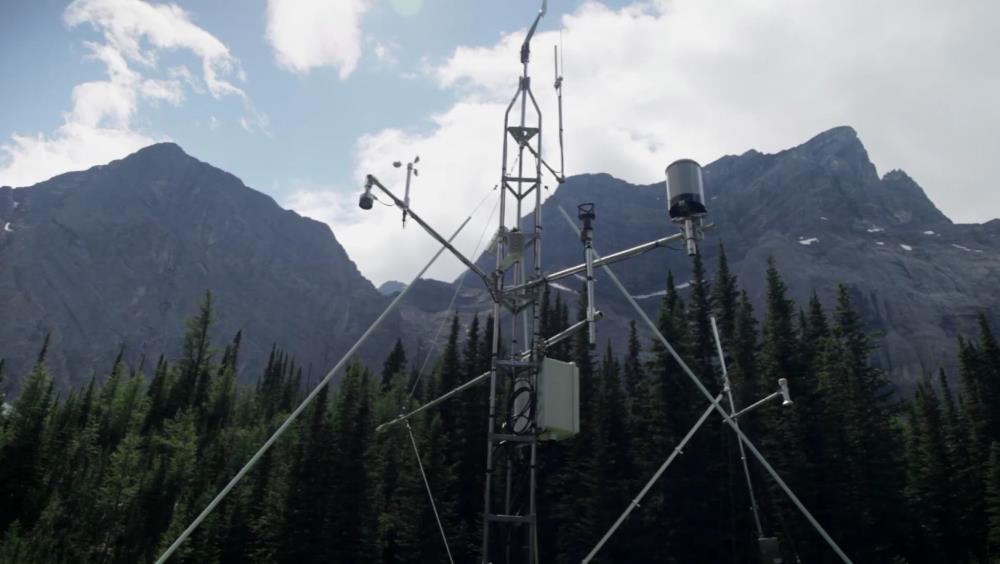
Related items loading ...
Section 1: Overview
Name of Research Project
Program Affiliations
Related Research Project(s)
Dataset Title
Environmental and gross primary production observations for a mature black spruce site located in central Saskatchewan, Canada
Additional Information
Creators and Contributors
|
Zoe Pierrat | Author; Point of Contact | zpierrat@g.ucla.edu | University of California, Los Angeles |
Bruce Johnson | Author | | University of Saskatchewan |
Warren Helgason | Author | | University of Saskatchewan |
Alan Barr | Author | | University of Saskatchewan |
Jochen Stutz | Author | | University of California, Los Angeles |
Abstract
Observations are presented here for the late winter / early summer period (March 20 to June 26) for 2019 and 2020 at a mature black spruce site located in central Saskatchewan, Canada. Daily means and standard deviations of the diurnal variability are reported for photosynthetically active radiation (PAR), soil volumetric water content (VWC), soil temperature, air temperature, vapour pressure deficit (VPD) and gross primary production (GPP). The site is equipped with a walk-up scaffold tower, 25m in height. PAR was measured with a Li-COR LI190R installed at the top of the tower; air temperature and relative humidity were measured at 6m height with a Vaisala HMP45C probe housed in a 12-plate Gill radiation shield; soil temperature at 10 cm depth was measured at two locations with Type-T (copper-constantan) thermocouples and averaged; soil VWC at 7.5 cm depth was measured at two locations with Campbell Scientific CS615 probes and averaged; VPD was calculated from air temperature and relative humidity. GPP was calculated from eddy covariance measurements of net ecosystem exchange (NEE) using a Campbell Scientific CSAT3 sonic anemometer in combination with a Li-Cor LI7200 infrared gas analyzer installed at the top of the tower. NEE was then partitioned into GPP and total ecosystem respiration (Re). The eddy covariance system was not operational in 2019, so GPP is only reported for 2020. PAR data were recorded at 1 second resolution and averaged into 30-minute time bins to compare with other environmental variables, then averaged for daily resolution. All other variables were recorded at a 30-minute time resolution and averaged for daily resolution.
Purpose
Plain Language Summary
Keywords
|
BERMS |
Black spruce |
gross primary production |
soil temperature |
soil moisture |
photosynthetically active radiation |
vapour pressure deficit |
Citations
Pierrat, Z., Johnson, B., Helgason, W., Barr, A., Stutz, J. (2021). Environmental and gross primary production observations for a mature black spruce site located in central Saskatchewan, Canada [Dataset]. Federated Research Data Repository.
https://doi.org/10.20383/101.0300
Section 3: Status and Provenance
Dataset Version
1
Dataset Creation Date
2021-03-24
Status of data collection/production
Dataset Completion or Abandonment Date
2021-03-24
Data Update Frequency
Creation Software
Primary Source of Data
Other Source of Data (if applicable)
Data Lineage (if applicable). Please include versions (e.g., input and forcing data, models, and coupling modules; instrument measurements; surveys; sample collections; etc.)
1. Description of methods used for collection/generation of data:
PAR was measured above the canopy with a Li-COR LI190R quantum sensor; air temperature and relative humidity were measured at 6m height (mid-canopy) with a Vaisala HMP45C probe; soil temperature at 10 cm depth was measured at two locations with Type-T (copper-constantan) thermocouples and averaged; soil VWC at 7.5 cm depth was measured at two locations with Campbell Scientific CS615 probes and averaged; VPD was calculated from air temperature and relative humidity at 6m height. GPP was calculated from eddy covariance measurements of net ecosystem exchange (NEE) using a Campbell Scientific CSAT3 sonic anemometer in combination with a Li-Cor LI7200 infrared gas analyzer installed above the canopy.
2. Methods for processing the data:
Data was recorded at a 30 minute time resolution and then averaged to create daily means and standard deviations. NEE was partitioned into GPP and total ecosystem respiration (Re) using the standard Fluxnet Canada methods (Barr et al., 2004). The eddy covariance system was not operational in 2019, so GPP is only reported for 2020.
Barr, A.G., Black, T.A., Hogg, E.H., Kljun, N., Morgenstern, K., Nesic, Z., 2004. Inter-annual variability in the leaf area index of a boreal aspen-hazelnut forest in relation to net ecosystem production. Agric. For. Meteorol. 126, 237-255.
https://doi.org/10.1016/j.agrformet.2004.06.011 3. Instrument- or software-specific information needed to interpret the data: N/A
4. Standards and calibration information, if appropriate:
Standard FluxNet-Canada protocols were adopted in the collection and processing of data.
5. Environmental/experimental conditions: N/A
6. Describe any quality-assurance procedures performed on the data: N/A
Section 4: Access and Downloads
Access to the Dataset
Terms of Use
Does the data have access restrictions?
Downloading and Characteristics of the Dataset
Download Links and Instructions
Total Size of all Dataset Files (GB)
0.00006
File formats and online databases
Other Data Formats (if applicable)
List of Parameters and Variables


 GWFNet
GWFNet Master
Master Data
Data Research
Research Map
Map
 Advanced
Advanced . . .
. . .

 Metadata Editor
Metadata Editor
 Record List
Record List
 Alias List Editor
Alias List Editor
 Legacy sites
Legacy sites